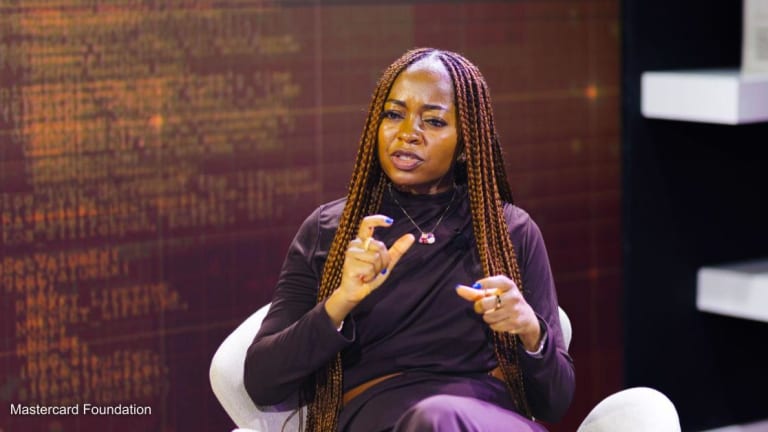
Anemia is a major public health concern, globally affecting an estimated 40% of children under 5, 37% of pregnant people, and 30% of women of reproductive age. It is vital to address access to diagnostics as it’s something too many people are lacking, said Lena Wahlhed, the director alliance development at HemoCue, a global leader in point‐of‐care testing.
“There are three important concepts: essential diagnostics, primary health care, and the ‘triple As’: availability, affordability, and accessibility of diagnostics,” said Wahlhed. “Diagnostics are the keys that can open the doors for treatment or action. If we cannot test, then we don't know what to treat.”
Anemia is a condition commonly detected using hemoglobin determination. Yet the cause of it needs to be further explored to provide a suitable intervention. lron deficiency anemia can be treated with iron-rich foods or iron supplements, while anemia due to other causes may require a different approach. If left untreated, it can lead to further complications.
The World Health Organization's first comprehensive framework on reducing anemia, launched during the recent World Health Assembly, revealed that women and children face serious health problems due to anemia. These include an increased risk of infections and death, impaired cognitive performance, extreme fatigue, poor pregnancy outcomes, loss of earnings, and poorer growth and development. The health, development, and economic consequences of anemia affect individuals, families, communities, and societies.
The 65th WHA in 2012 made the commitment to halve the prevalence of anemia in women of reproductive age by 2025. As a result of slow progress since, the new WHO framework was launched this year and called on countries to accelerate action to meet the target.
But the issue is that in order to detect anemia, medical practitioners need to be able to measure hemoglobin levels. For around half of the global population, access to such, and other diagnostics, is limited.
Sitting down with Devex, Wahlhed explained why certain demographics are more affected by anemia than others, what it will take to reduce the number of women affected, and how HemoCue is working to tackle the issue of accessible diagnostics globally.
This conversation has been edited for length and clarity.
What are the causes of anemia and why does it disproportionately affect women and children?

The cause of anemia can vary depending on geography, age, societal reason, underlying conditions, or due to hemoglobinopathies. It can be a cause or an effect. From a systematic point of view, if nutritious food is not available or accessible, that may lead to iron deficiency anemia. If there is a high incidence of malaria, it is important not only to diagnose and treat the malaria but also to address the related anemia, as it can be an effect of malaria. Pregnant women and children are more likely to develop severe illness from malaria. I remember Dr. Odhiambo saying that people do not die because of malaria, they die because so many have anemia. That stuck with me.
If we take a step back and look at the adolescent girl, having heavy menstrual bleedings can also be a cause of anemia. During pregnancy, the risk of developing anemia increases due to the larger volumes of blood in the body required to support the growth of the baby, hence the increased need for iron and nutritious food. At the time of labor, there might also be blood loss. Taken altogether, if an adolescent girl has untreated anemia and enters into pregnancy during which anemia remains undetected or untreated, not only is there more risk for the woman during her pregnancy, but there is also a higher risk of the baby being born anemic. It becomes an intergenerational cycle of anemia.
On top of that, I think it's important to stress that it's not just a physical condition but it has other effects. If you're not addressing the anemia within a child’s first 1,000 days, there is a risk that that child will not be able to learn and have the skills that they need. For adults, it may affect their ability to work and hence increase the risk of poverty.
How do you think WHO’s goal of halving anemia in women of reproductive age by 2025 can be achieved?
There are many different players that have different pieces to that puzzle. It’s a multiple stakeholders’ affair. Though anemia is so well-known, still, further awareness is needed. This we can do together. We hold the one piece with the diagnostics, but there needs to be logistics to get the goods there. You need the program developed by either an organization or the stakeholder and then find out what's causing anemia and if a broad intervention is needed like fortified food, malaria eradication, or treating the underlying condition. There are also recent publications sharing that anemia has been linked to mental health conditions such as depression and anxiety. We need to start with the adolescent girls, the pregnant women, and the newborn children, ensuring that they do not have anemia, and if they do, act on the cause of it. This can be done in antenatal clinics, in schools, and community settings but also as outreach to places frequented by women. There needs to be awareness that this can be done and is important to act on.
In HemoCue’s work in providing essential diagnostics and advocating for their global availability, what lessons have you learned about how health technology companies can work across sectors to promote universal health coverage?
We are a commercial entity and with that also comes a responsibility. The WHO essential diagnostics list lists parameters that are important and needed at the first level of care. As a company doing these tests, I think it's our responsibility to make sure that they are available, that they are affordable, and that they are adapted to the environment in which they are to be used — be that in terms of temperature, ease of use, cost efficiency, regulatory requirements, the logistic chain, and the products that can support with this. That is a lesson learned in my experience that I try to address as often as I can because it's not a one-man show. We need to do this together, we need to have a global responsibility, and a global consciousness at a high level all the way to the community level. We as HemoCue take our responsibility to improve access and ensure that accurate point-of-care diagnostics are being available also in low- and middle-income countries.
What would your call to action be for the international community when it comes to transforming health outcomes globally?
Essential medicines and essential diagnostics are here to stay. They are of immense importance and having access to them in a primary health care setting is of great value There is so much that can be done at the first level of care.
Something that drives me is to embrace health and to do that in a sustainable way. To care for all health through life, allowing children to have the best possible start and opportunities ahead, to ensure healthy adolescence and continue through life toward the shimmering aging and healthy elderly. To ensure that wherever they are no one is left behind.
Three important concepts can be the pillars in supporting this: essential diagnostics, primary health care, and the triple A’s: availability, affordability, and accessibility.
For more information, go to https://www.hemocue.com/en/clinical-settings/public-health




